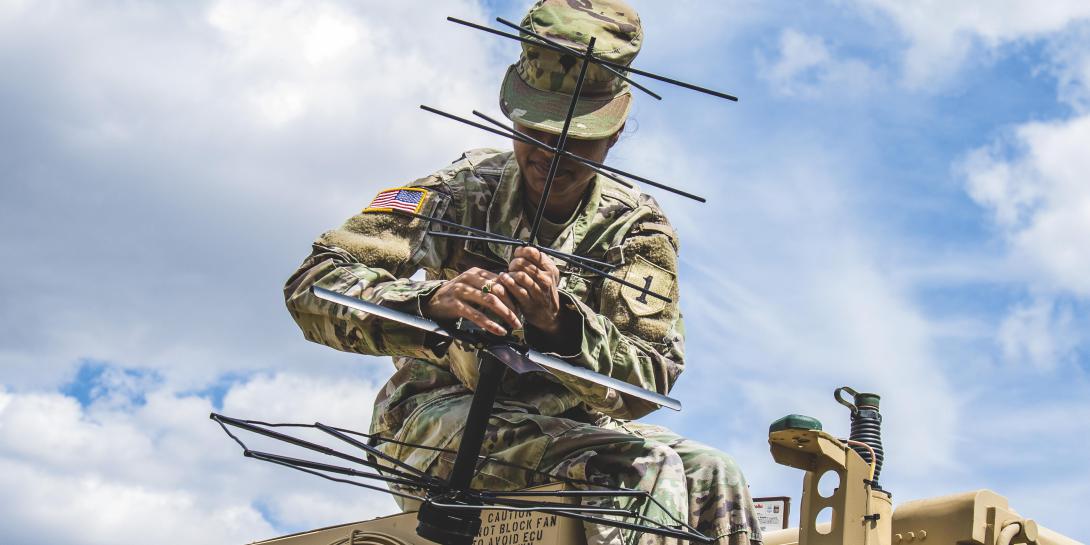Army Poised to Release MDO Posture Statement
U.S. Army officials expect soon to release a multidomain operations (MDO) posture statement that will complement both the new MDO vision document released by the Army Chief of Staff and the posture statement from U.S. Cyber Command.
The MDO posture statement will detail how the Army intends to achieve its MDO vision for 2035. It will be released soon, possibly as early as April, according to Army officials conducting a March 26 telephonic media roundtable.
Army officials organized the roundtable to discuss a paper released March 23 outlining the chief of staff’s MDO vision. That paper is entitled “Army Multi-Domain Transformation: Ready to Win in Competition and Conflict.” The paper addresses how and why the Army plans to transform itself to become a multidomain capable force able to dominate adversaries in sustained large-scale combat operations by 2035.
“Although our Army still maintains overmatch, it is fleeting. In the face of determined adversaries and accelerating technological advances, we must transform today to meet tomorrow’s challenges,” Gen. James McConville, USA, chief of staff of the Army, says in the preface of the March 23 document. “Future conflicts will manifest at longer range, across all domains, and at much greater speed, both physical and cognitive. We must therefore continue to implement a 21st century talent management system, develop and field new weapon systems, transform our doctrine, build new organizations and change the way we train.”
An Army press release accompanying the document explains that the service “currently faces an inflection point that requires innovation, creativity and entrepreneurship in the application of combat power as our nation’s adversaries continue to gain on the Joint Force’s qualitative and quantitative advantages. By 2035, the Army will enable the Joint Force to maneuver and prevail with a calibrated force posture of multidomain capabilities that provide overmatch through speed and range at the point of need.”
Gen. McConville’s vision relies on expanding the global landpower network, a series of Army-to-Army relationships between the U.S. and its allies and partners to give the United States a positional advantage over potential adversaries. “Positional advantage is gained primarily through an expanded global landpower network with allies and partners,” the document states.
“Partner militaries, including their senior leaders, are predominately land force-centric. In the Indo-Pacific, 24 of 29 armed forces chiefs are army officers, and of the 30 NATO member states, 22 have armed forces chiefs from their respective armies. Through this professional kinship, the U.S. Army can play an outsized role in supporting U.S. inter-agency objectives in a whole-of-government approach,” it continues.
The Army strategy calls for a combination of assigned forces and rotational forces in key regions around the globe. In the Indo-Pacific, for example, relatively light multidomain forces, capable of engaging targets in all domains at operational and even strategic ranges, will be prepositioned in parts of the first island chain and act as the linchpin of effective joint and combined defenses. Joint and combined capabilities in the first island chain will mix anti-ship, anti-aircraft and surface-to-surface missiles to threaten early damage to adversary forces. These operations will be more affordable as they will be conducted in concert with regional partners.
The soon-to-be-published posture statement also will complement the just-released cyber posture statement released March 25 during a Senate Armed Services Committee hearing by Gen. Paul Nakasone, USA, commander, U.S. Cyber Command.
Gen. Nakasone promises to focus on great power competition through persistent engagement, especially in support of U.S. Indo-Pacific Command, and particularly through improving the efficiency and effectiveness of Department of Defense Information Network operations and defensive cyberspace missions.





Comments